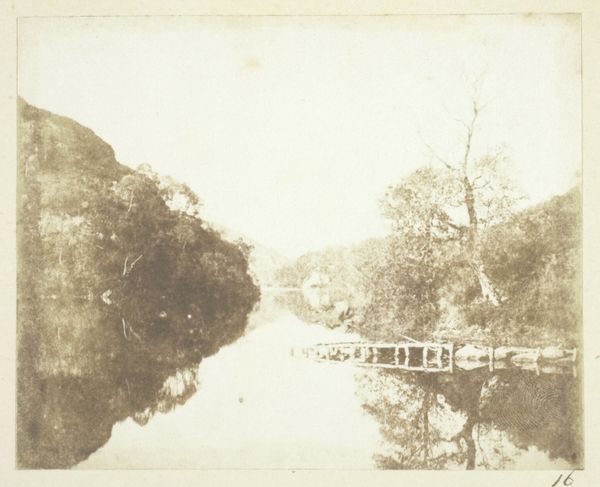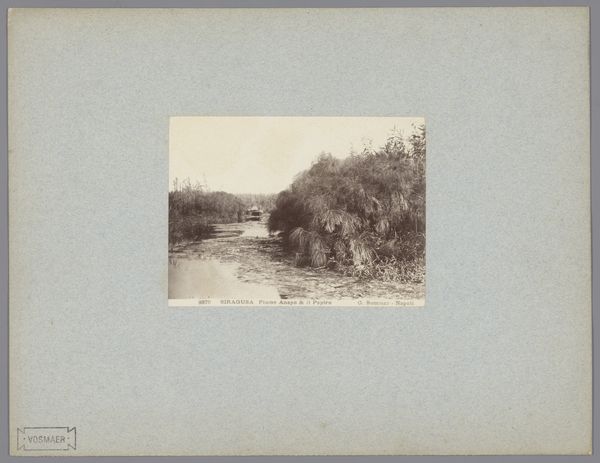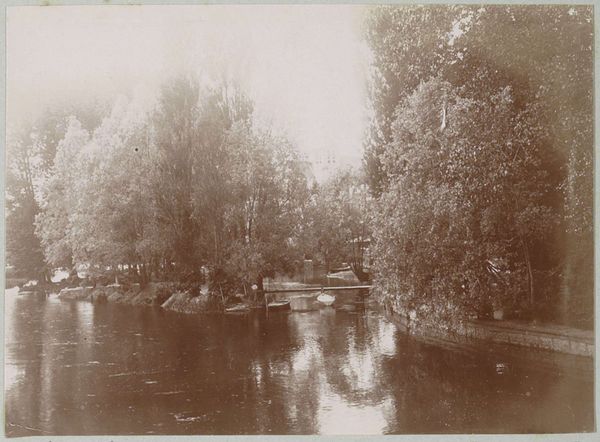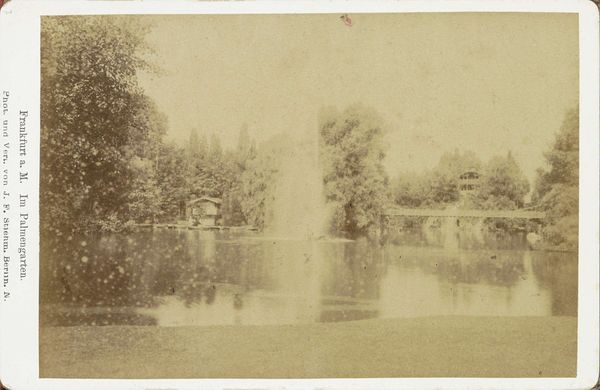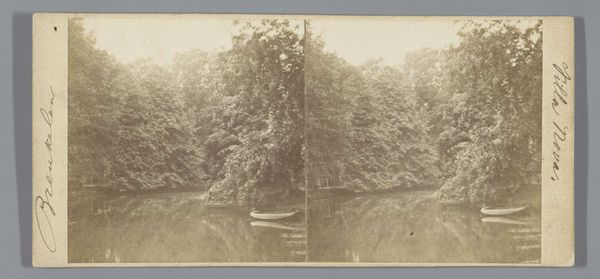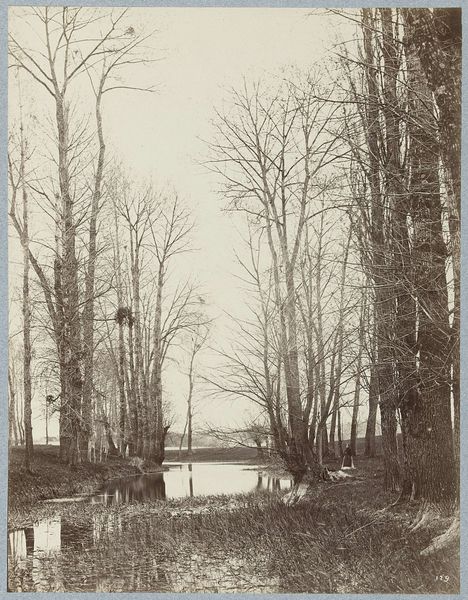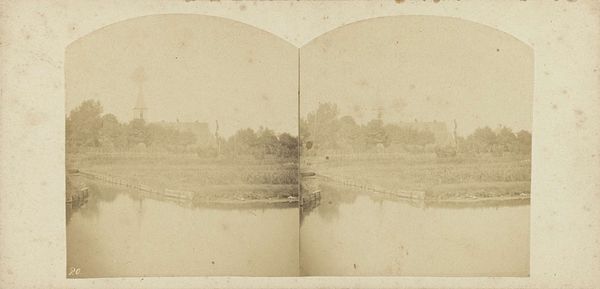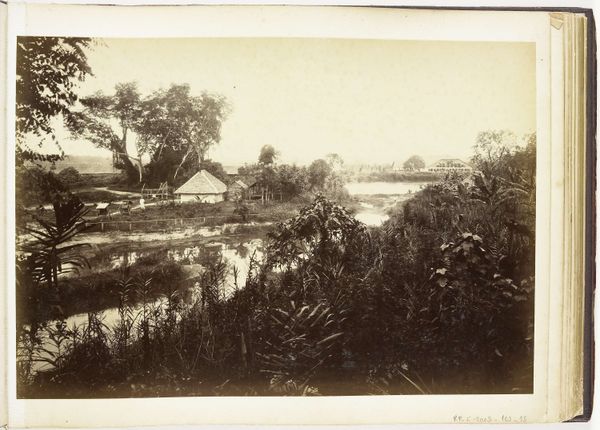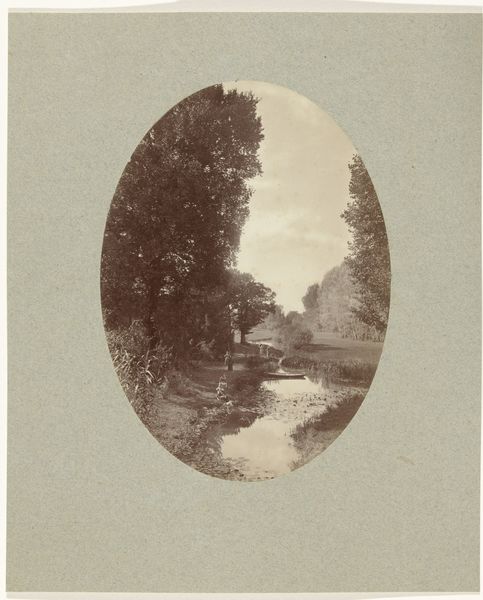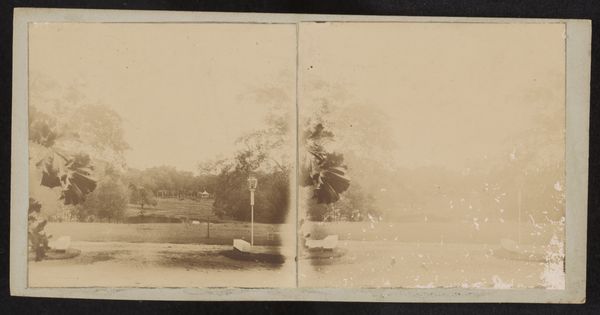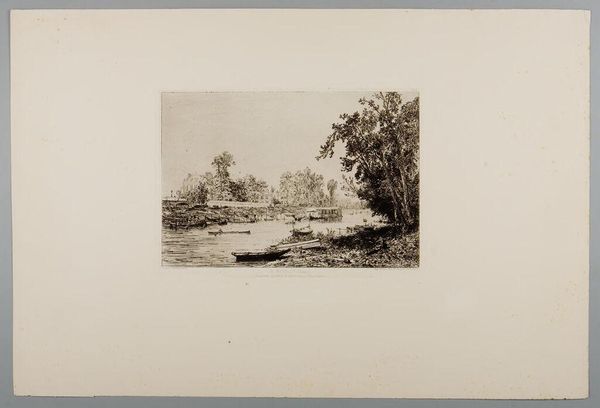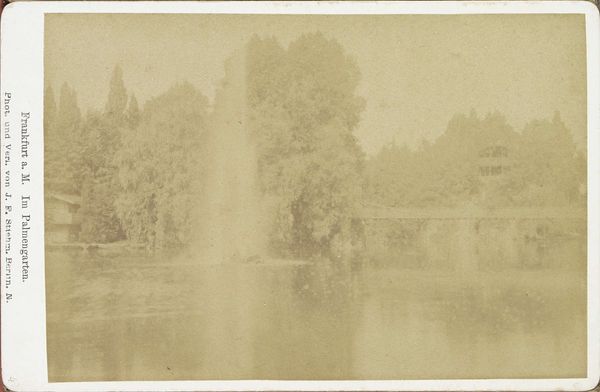
Fotoreproductie van een schilderij van een landelijk tafereel met water en bomen c. 1901s
0:00
0:00
Dimensions: height 83 mm, width 102 mm
Copyright: Rijks Museum: Open Domain
Editor: This is a photo reproduction from circa 1901 of what looks like a landscape painting. I'm struck by the almost dreamlike quality of it – the tones are very soft and muted, giving it a sense of stillness. How do you interpret this work in relation to the time period it was made? Curator: It’s fascinating how photography is being used here to represent another medium: painting. Given the rise of photography in the late 19th and early 20th centuries, many artists debated its role in relation to traditional art forms like painting. Was photography simply a means of documentation, or could it be art in itself? And what happens when you photograph a painting? What does this gesture mean in terms of the hierarchies within art institutions and art history itself? Editor: So, the act of photographing the painting is almost as significant as the image itself? Curator: Precisely. The soft focus and monochromatic tones you mentioned give it that evocative, almost ethereal quality associated with the Pictorialist movement in photography, where photographers sought to elevate photography to the status of art by manipulating the image to resemble painting or etching. Why reproduce a landscape painting in this style? Was it a challenge to painting, a homage, or something else entirely? Consider the cultural prestige associated with painting at the time. Editor: That makes me wonder, who was the intended audience for a reproduction like this? Was it to bring art to a wider public who might not have access to original paintings? Curator: Good question. The rise of illustrated magazines and affordable printmaking techniques certainly made art more accessible, fueling the popularization of landscape imagery. This piece encourages us to consider how art shapes, and is shaped by, social structures. The act of reproduction changes its public function and meaning, shifting art into the public realm. Editor: This has definitely broadened my view of the piece, I'll definitely keep an eye out for signs of the social factors impacting image-making. Curator: I'm glad. It’s this intersection of art and culture that reveals its lasting value.
Comments
No comments
Be the first to comment and join the conversation on the ultimate creative platform.
